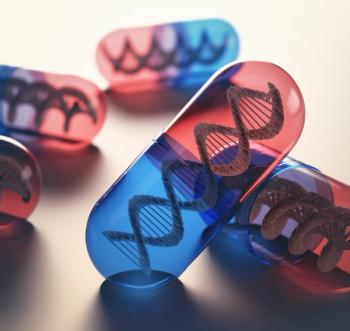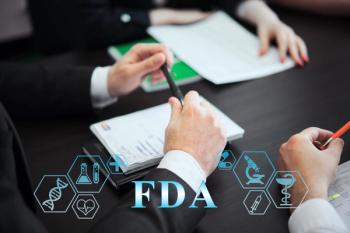
- Pharmaceutical Executive-10-01-2005
- Volume 0
- Issue 0
Whose Afraid of Authorized Generics
No brand manufacturers plan to market generic versions of their own product, at least not until the patent expires. And why would they? As long as the branded version enjoys patent protection, marketing a cut-rate product would eat away profit margin during the years when a drug makes the most money.
No brand manufacturers plan to market generic versions of their own product, at least not until the patent expires. And why would they? As long as the branded version enjoys patent protection, marketing a cut-rate product would eat away profit margin during the years when a drug makes the most money.
But what happens if a patent is challenged? Under the Hatch-Waxman Act, generic-drug manufacturers that win Paragraph IV challenges are rewarded with 180 days of market exclusivity. For six months, they can sell their own generic version without competition from other generic companies. And during this period, brand manufacturers lose market share as rapidly as they do after patent expiration, when generic competitors flood the market. But there is a way to mitigate these losses, devastating as they are. A brand manufacturer can mount a rear-guard action by launching its own off-brand—an authorized generic—with the cooperation of a generic distributor.
Companies hemorrhage profits in the wake of a lost patent challenge. Typically, the generic company will set its price approximately 20 to 30 percent below the brand, and erode the brand's market share by more than 75 percent after the first two months. But by quickly entering the market with its relabeled "brand in a bottle," a manufacturer can use its own generic product to capture a share of the competitor's business, if only at a reduced price. Earning additional revenue on generic products may seem like cold comfort to a company that just lost a profitable patent. But the alternative—even greater losses—is much worse.
Lifecycles of Generics
In spite of the potential revenue upside—or perhaps reduced revenue downside—many brand companies have been reluctant to enter partnerships with authorized-generics marketers. Many are uncertain about the payoff or simply inexperienced with the generic market. But some wonder whether these partnerships are legal under the Hatch-Waxman Act. After all, the law provides 180 days of exclusivity to reward the generic company that successfully challenges the patent of a brand product. Arguably, allowing for a second generic product has the effect of reducing that incentive.
That is the argument that Teva, Mylan, and the Generic Pharmaceutical Association advanced early in 2004 in citizen petitions to FDA. They asked the agency to ban authorized generics, but FDA declined to get involved at first, claiming that it would not be appropriate to interfere with business arrangements. Teva and Mylan then filed suit against FDA. In Teva v. Crawford, Teva attempted to nullify an authorized-generics contract between Pfizer and its subsidiary Greenstone for generic gabapentin. In June 2005, the District Court of Appeals of the District of Columbia decided against Teva, ruling that nothing in the Hatch-Waxman Act prevented a patent owner from reselling its own product. This decision cleared the legal hurdles for authorized generics under the Hatch-Waxman Act.
Unless generic manufacturers challenge authorized-generic contracts under some other law, Congress is the last resort for companies attacking authorized generics. At this point, Congress could still amend the Hatch-Waxman Act to prevent future authorized-generics contracts. However, changes to the law are extremely unlikely for at least three reasons. First, there have been no calls within Congress to put an end to these agreements. Second, in the Medicare Modernization Act of 2003, Congress passed a significant piece of legislation that amended parts of Hatch-Waxman. Lawmakers have little momentum to revisit the law anytime soon. Third, authorized generics create competition and may help lower drug prices. So arguing for fewer generics is not an appealing political argument. As a result, it seems safe to say that authorized generics are here to stay.
Even before Teva, some of the industry's largest firms, including Bristol-Myers Squibb, Johnson & Johnson, GlaxoSmithKline, and Abbott, entered into authorized-generics arrangements with generics marketers. But many other companies that could profit from such business partnerships remain on the sidelines. After Teva cleared the legal objections to authorized generics, the biggest remaining obstacles may be common myths about the generic marketplace.
The Mechanics of an Authorized Generic
Here are three that brand companies still cling to, but that must be dismissed:
MYTH #1: If we release an authorized generic, our brand share will erode faster than it would if just one generic was on the market.
Brand companies have grown accustomed to how quickly generics erode their brand shares. While there are some rare exceptions to typical share-erosion curves (e.g., when a brand is priced like a generic, has a narrow distribution channel or is a true Narrow Therapeutic Index drug) erosion is a simple function of supply and demand. If there is enough generic supply priced lower than the brand, the erosion will occur at about the same rate whether one, two, or more companies supply the generic product.
MYTH #2: We can wait and see what happens in the generic market before we enter an authorized-generics contract.
Long before generics enter the market, generic manufacturers meet with major retailers and others in the distribution channels to finalize sales agreements. Just as a pharmacy benefits manager prefers one brand in a class, distributors of generics typically purchase just one generic. So first-mover advantages apply in the generic market just as in the brand market. If an authorized-generic product launches after the ANDA generic, it can have a difficult time gaining market share, since distributors are locked into the competing generic product. A brand team needs to commit to an authorized generic months before the first generic enters the market.
MYTH #3: Authorized-generics partnerships are complicated and divert brand resources.
On the contrary, authorized-generics arrangements are simple. They typically need few brand resources. The brand company must ask the business development group to arrange the deal, and it must allocate some resources for follow-up activities, such as accounting, finance, and supply-chain forecasting. The authorized generic can be beneficial to manufacturing. In many circumstances, the entry date of the authorized generic will be uncertain since the Paragraph IV case will be working its way through the legal system. The authorized-generics partner can facilitate manufacturing planning and smooth the ramp-down of the brand product.
Strategy and Practicality
Once a brand team commits to the authorized-generics strategy, a few issues remain:
Choosing a generic partner Just like brands, generic companies are not alike. Matching the brand product with the right generic company is a key consideration. Some generic companies have strong alliances with certain distributors or within certain channels, while others have operational advantages or a better understanding of how to market and distribute an authorized-generic.
Timing the launch Because authorized generics go to market after a patent challenge, timing the generic launch is difficult. The ANDA-generic company has to win the court case, including the appeal. But it can still launch "at-risk" before a final court decision. For example, Teva launched the 80-mg generic version of OxyContin (oxycodone) before the final Court of Appeals ruling.
Scenario planning Timing isn't the only factor to consider when it comes to launch date. Many scenarios affect the authorized generic, including number of ANDA filers, seasonality of some products, regulatory filings, and supply issues. The brand team must prepare for various possibilities and map the end of the product life cycle with a simple scenario-planning tree. This enables management to approve responses before events occur.
Managing the generic partner The brand company must build a strong management team to oversee the generic partner. Once committed, the brand team wants to maximize the success of the authorized generic against the exclusive-generic competitor. Stronger management resources will help drive profits.
Gregory Glass is the principal member of Gregory Glass Associates, and edits The Paragraph Four Report. He can be reached at comments@gregoryglass.com. Christopher J. Worrell, principal of The Worrell Group LLC, can be reached at cworrell@comcast.net
Articles in this issue
about 20 years ago
From the Editor: No Substitutesabout 20 years ago
Following Scienceabout 20 years ago
Washington Report: Antivirals: Meeting a World of Needabout 20 years ago
From the Editor: Incorporating Complianceabout 20 years ago
Under the Influenceabout 20 years ago
Orchestrating Complianceabout 20 years ago
Thought Leader: Room for Improvementabout 20 years ago
Global Report: Animal Attacksabout 20 years ago
Physician Frustrationabout 20 years ago
Key Opinion Leaders Interactions with PharmaNewsletter
Lead with insight with the Pharmaceutical Executive newsletter, featuring strategic analysis, leadership trends, and market intelligence for biopharma decision-makers.





